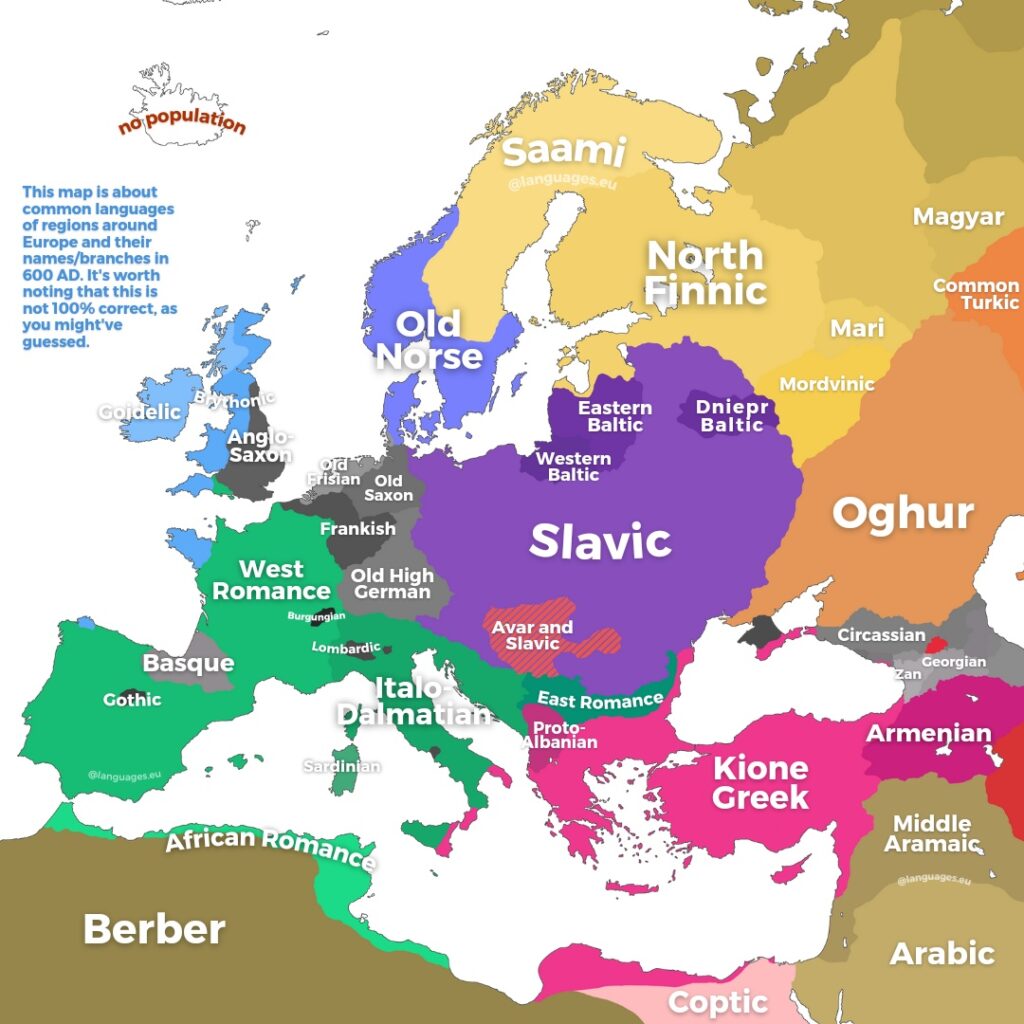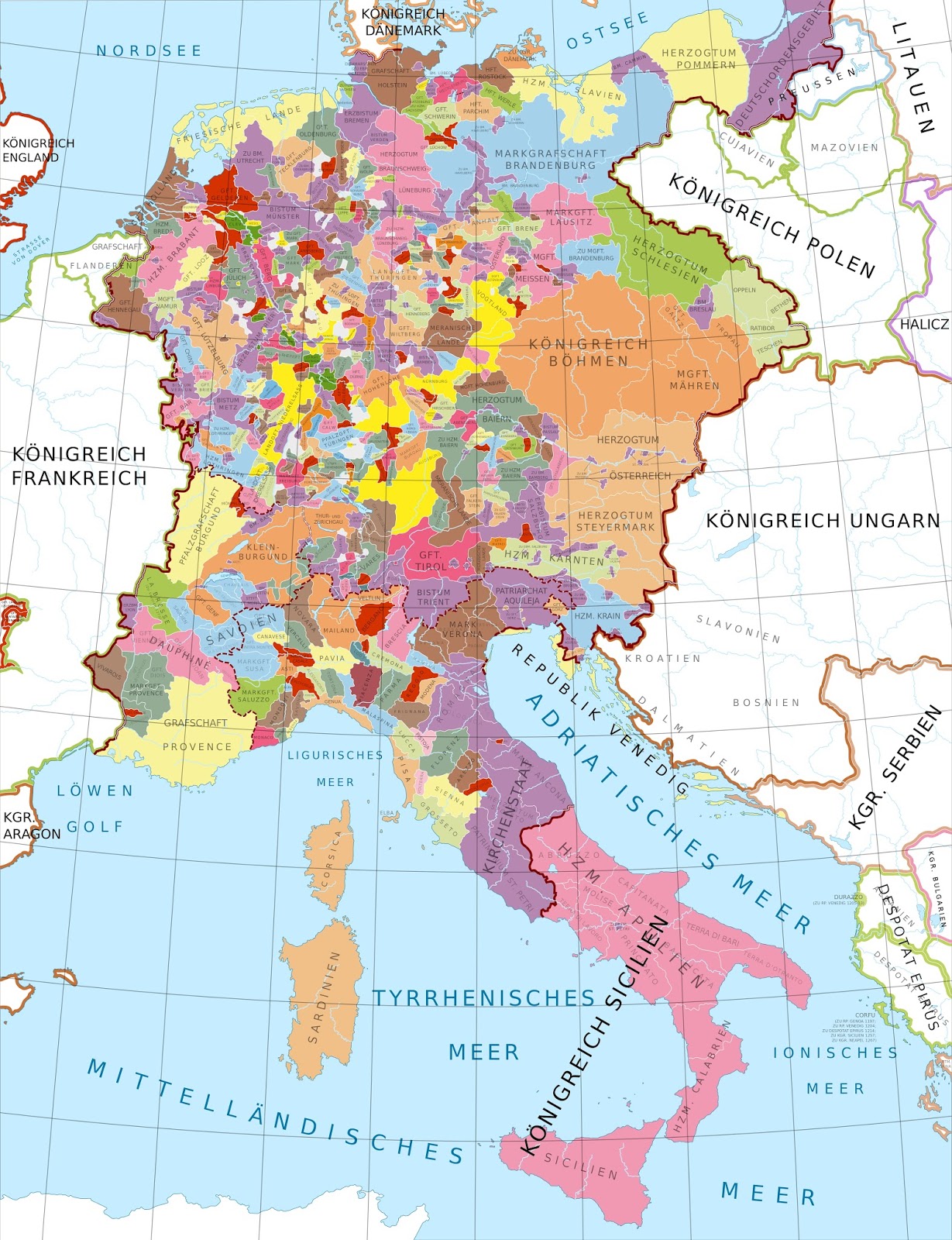Map of Europe in 600 AD
Imagine Europe in the year 600 AD – a continent in the middle of massive change. The mighty Roman Empire had fallen in the West, leaving behind a patchwork of new kingdoms where different cultures and powers were jostling for control. In the East, the Byzantine Empire kept the flame of Roman civilization alive, but Western Europe was transforming into something entirely new. Christianity was spreading across the land, different peoples were on the move, and the languages we know today were just beginning to take shape.
A Changing Continent

The year 600 AD marked a major shift in Europe’s history. According to J. W. Hanson and S. G. Ortman, the population of the former Roman territories declined by around 20% between 400 and 600 AD, or even up to one-third between 150 and 600 AD. The Early Middle Ages saw the rise of new powers and the shifting cultural landscape that would shape the future of Europe.
One of the biggest changes in this period was the increasing division between Western and Eastern Europe. The Byzantine Empire remained a dominant force in the East, preserving much of Rome’s legacy but developing its own distinct identity. Byzantine influence played a crucial role in Christianizing Eastern Europe, introducing the Cyrillic alphabet and establishing the tradition of Caesaropapism—where the ruler also had authority over the Church.
The Anglo-Saxons and Christianity
By 600 AD, the Anglo-Saxons in England had begun converting to Christianity. Missionaries, such as Augustine of Canterbury, arrived from Rome and helped establish Christianity among the various Anglo-Saxon kingdoms. This religious transformation would play a key role in shaping English identity and governance over the coming centuries.
The Steppe Invasions
While Western Europe was reorganizing itself, the vast Pontic steppe to the east was a battleground of migration and invasion. Turkic and Iranian groups from Central Asia moved westward, disrupting the established agricultural societies of Central Europe and the Balkans. These invasions led to the creation of new states and the movement of different peoples across the region.
Languages of Europe in 600 AD

Another fascinating way to look at Europe in 600 AD is through its languages. Reddit user languageseu created an interesting map depicting the common languages spoken across Europe at the time. While the creator notes that the map isn’t 100% accurate, it still provides a valuable visual of the linguistic landscape of early medieval Europe.
At this time, Latin was still widely used in former Roman territories, but the local Romance languages that would eventually evolve into Spanish, French, and Italian were already taking shape. In the Germanic world, Old English was developing alongside various other Germanic dialects. Meanwhile, Slavic languages were beginning to spread across Eastern Europe, influenced by the migrations and interactions of different peoples.
Europe in 600 AD: A Period of Transformation
Europe in 600 AD was a continent undergoing profound change. The foundations of modern nations were just beginning to take shape, influenced by the decline of Rome, the expansion of Christianity, and the migration of peoples. Studying a map of Europe from this era provides a fascinating glimpse into a world in transition.
What are your thoughts on this period in history? Do you find early medieval Europe intriguing? Let me know in the comments!
If you love maps, here are some Europe map posters you might like (Note: These links will take you to Amazon).









i love article much help good stars you get i now understand big much about the middle ages
I love this article so much it helps on so much.